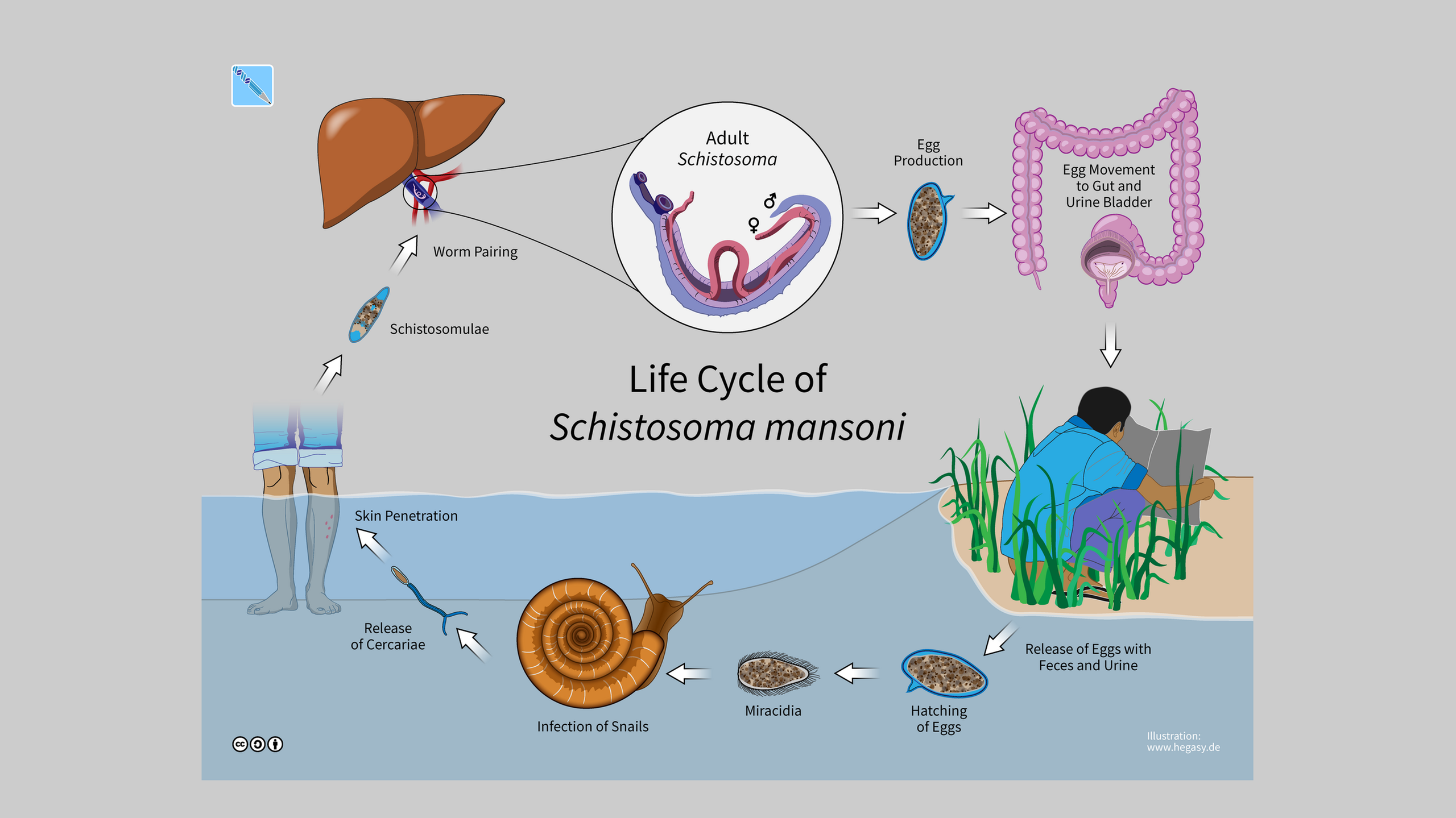Explained in brief Schistosomiasis and genital schistosomiasis
According to the World Health Organization (WHO) schistosomiasis affects around 250 million people. The parasites are found in tropical and sub-tropical regions, mainly in rural areas with poor access to safe drinking water. The WHO estimates that around 90 per cent of the people requiring treatment for schistosomiasis live in Africa.
The symptoms of the disease are very diverse, ranging from fatigue to organ failure. It is difficult to know how many deaths are caused by schistosomiasis, but the WHO estimates that the global figure is just under 12,000 a year. Far more people suffer constant pain and physical weakness because of chronic infection with the parasites.
Over the last 20 years, huge advances have been made in the fight against schistosomiasis. In many countries it has already been possible to contain the disease. The infection responds well to treatment. The disease needs to be caught and treated with praziquantel at the earliest stage possible. This drug is effective in helping to eliminate the worms. In areas with high levels of the parasites, the WHO recommends a combination of repeated preventive treatment for the population, improved water supply and sanitation, reducing the population of water snails, and information campaigns to show how the disease can be prevented.
Genital schistosomiasis – a special challenge
In girls and women, an infection with the parasites can take the form of female genital schistosomiasis (FGS). This can cause severe pain, lesions in the genital area, vaginal bleeding, infertility, ectopic pregnancy, miscarriage and pain during intercourse. The weakening of the membranes in the vagina and possible bleeding caused by FGS significantly increase the risk of contracting sexually transmitted diseases such as HIV.
Worldwide, an estimated 56 million women and girls are affected by genital schistosomiasis. In southern Africa, it is one of the most widespread gynaecological illnesses. Despite that – typically for a neglected disease – there has been little research into FGS. And even in areas where it is very prevalent, health workers know little about it. As a result, many women who are affected by it are wrongly diagnosed with a sexually transmitted disease, do not receive effective medicines and suffer chronic symptoms from the disease. In many cases they also experience stigmatisation and social isolation. This means that FGS is a disease which contributes significantly to gender inequality, creating health and social barriers that prevent women and girls from participating equally in society.
As at: 07/10/2024
